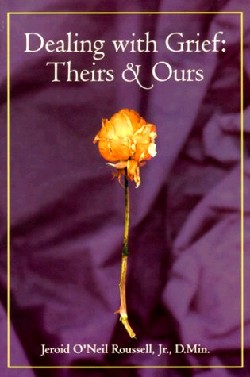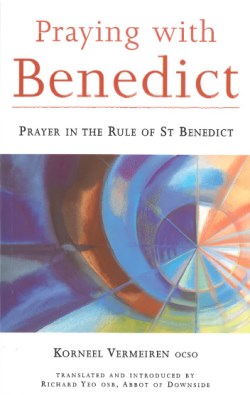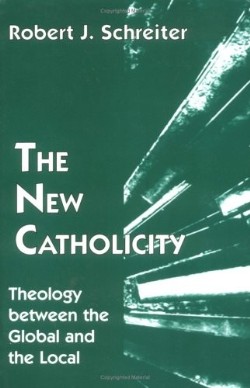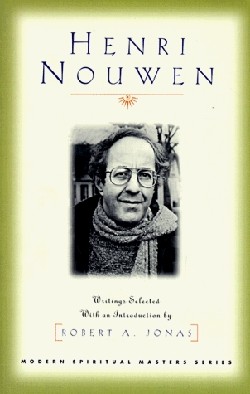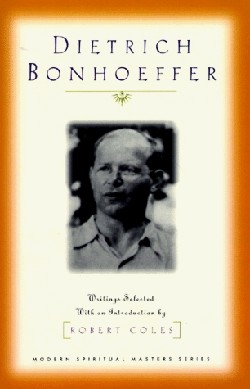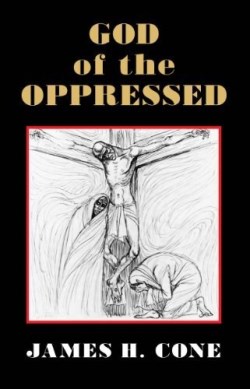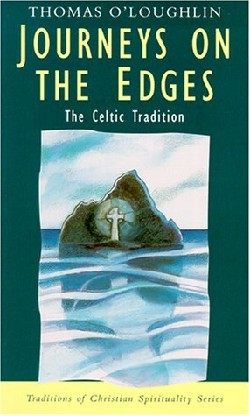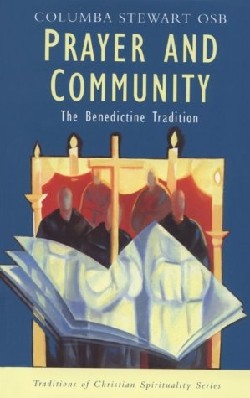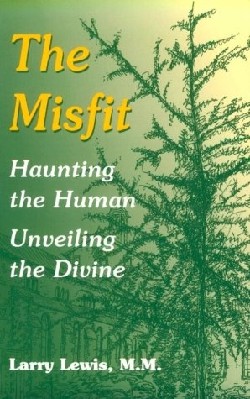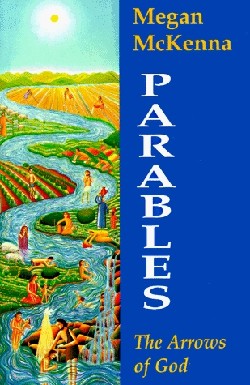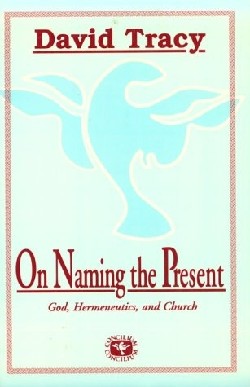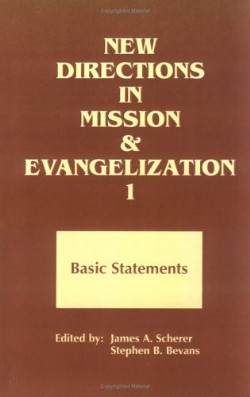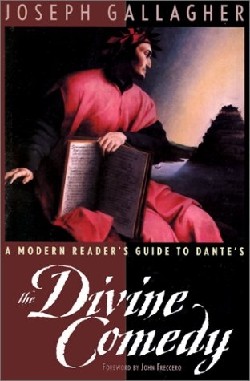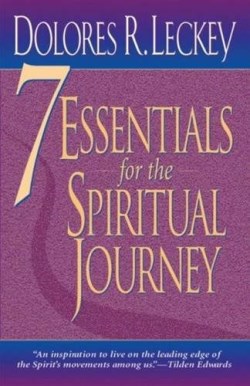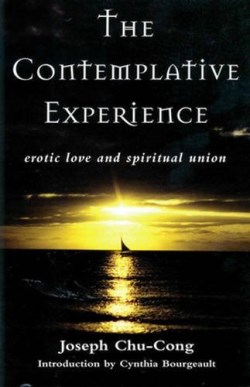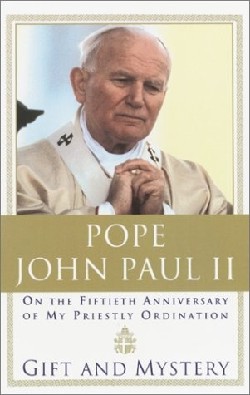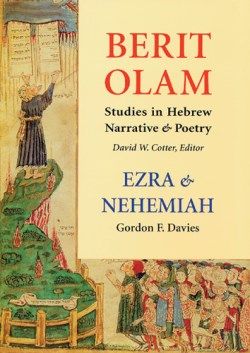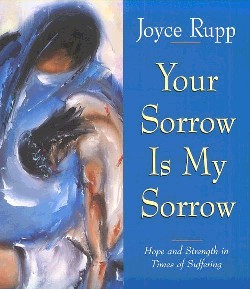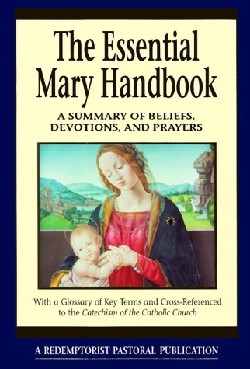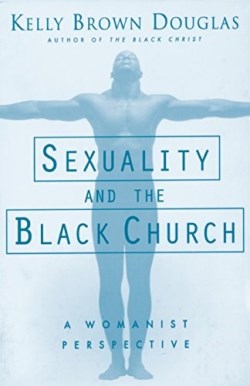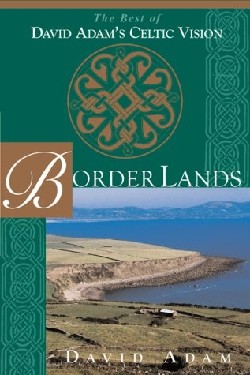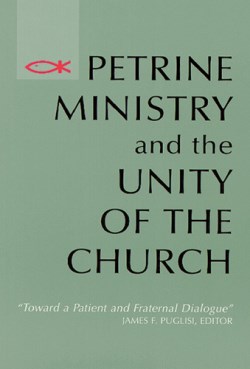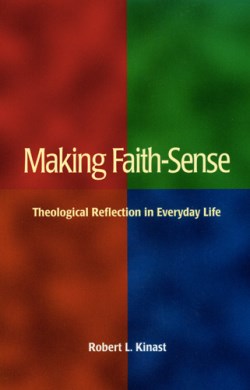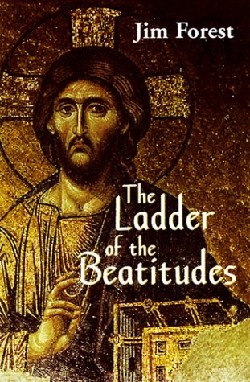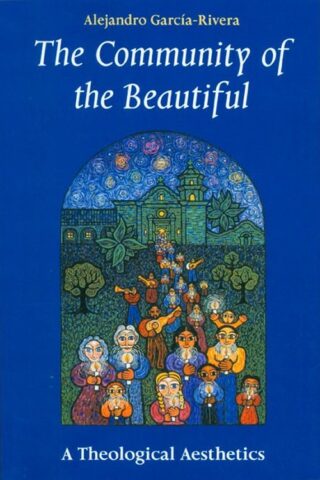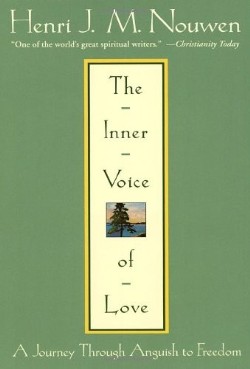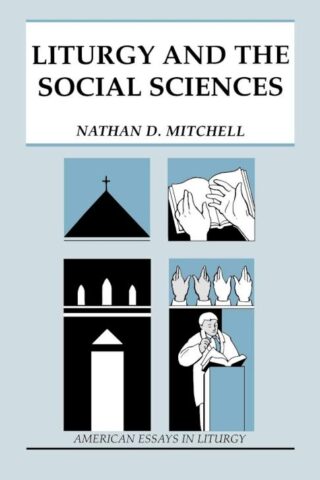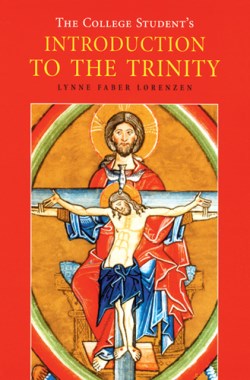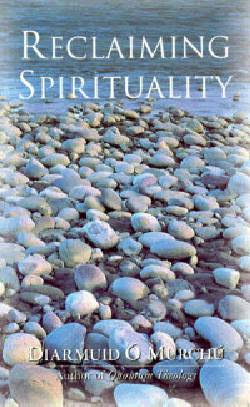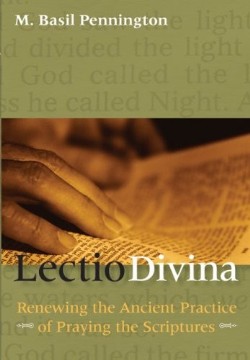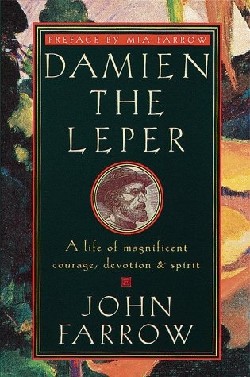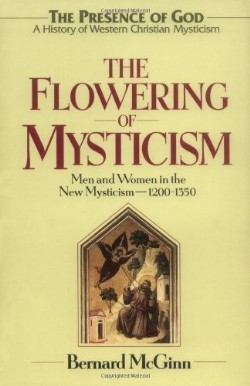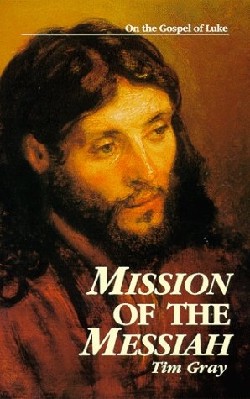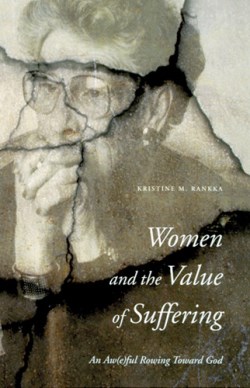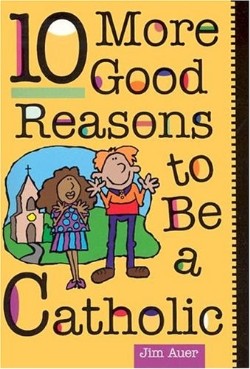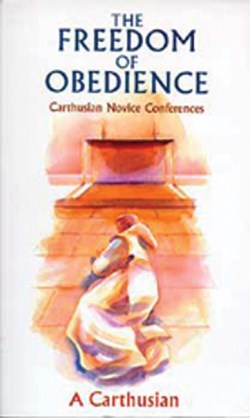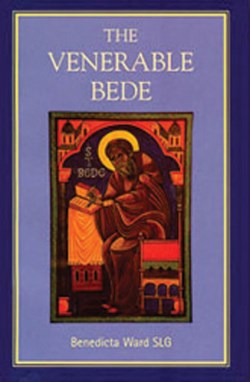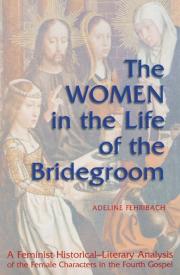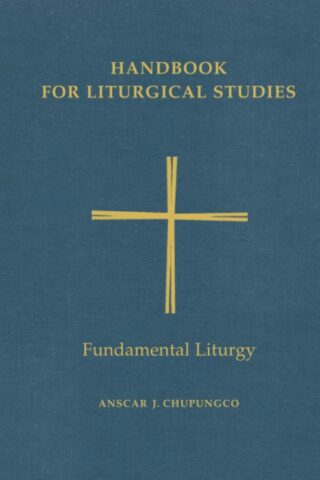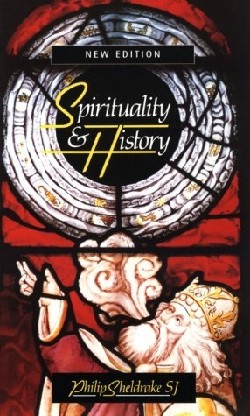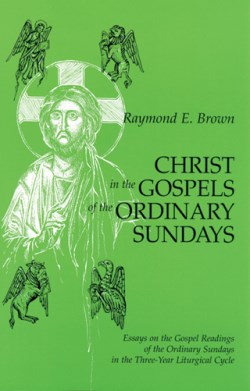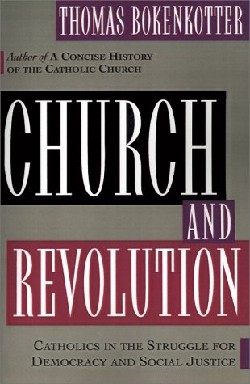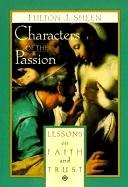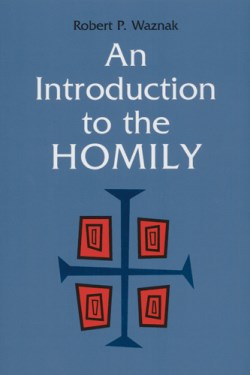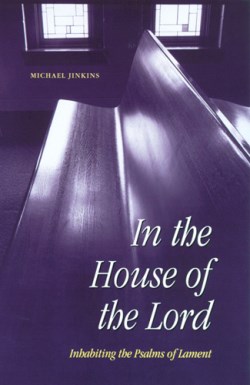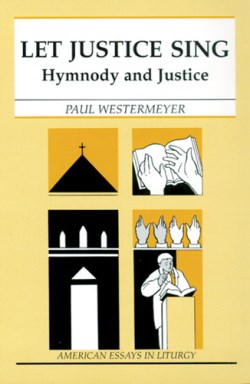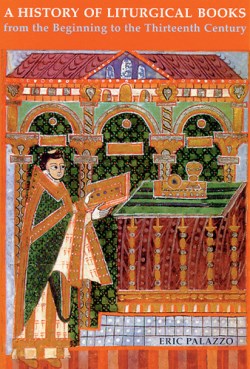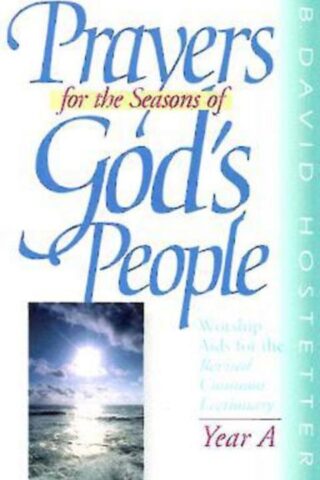Books
Showing 2651–2700 of 3127 resultsSorted by latest
-
Praying With Benedict
$18.95Add to cartPraying with Benedict explores the spirituality of the monastic tradition and draws out the essence of a way of praying that embraces the whole of the Christian’s life.
Korneel Vermeiren begins by examining the spirituality of the early monastic tradition from the fourth to the sixth centuries. He looks at the central place of prayer in the Rule of St Benedict and the tradition of continuous prayer, exploring the teaching of such formative figures as Basil the Great. He then reflects on the Benedictine precept: ‘nothing is to be preferred to the work of God’.
Praying with Benedict looks in practical terms at the how, when, and where of prayer; at bodily postures, various types of prayer, and the importance of emotional and spiritual readiness. Finally, the place of the Eucharist in the life of prayer is discussed with reference to Benedict’s teaching and the eucharistic practices of pre-Benedictine monasticism.
This book offers a clear presentation of monastic spirituality and opens it to persons outside monastery walls. It links St Benedict’s teaching to earlier spiritual traditions and shows how various elements of monastic life complement each other. Common prayer, reading, personal prayer, and the Eucharist are not isolated from one another or from daily life, but are integral and essential elements of living in the spirit of St Benedict.
-
God Of The Oppressed
$26.00Add to cartIn his reflections on God, Jesus, suffering, and liberation, James H. Cone relates the gospel message to the experience of the black community. But a wider theme of the book is the role that social and historical context plays in framing the questions we address to God as well as the mode of the answers provided.
-
Journeys On The Edges
$19.00Add to cartThomas O’Loughlin’s fresh and original introduction to Celtic spirituality begins by questioning the very notion of a distinctively “Celtic” spirituality. Brilliantly re-examining the original sources, he argues that there is one over-arching theme giving them a unity–the idea of being “on the edge”, both culturally and geographically.
-
Modern Readers Guide To Dantes The Divine Comedy
$22.99Add to cartThe Divine Comedy has been a cornerstone of Western literature for the better part of a millennium. In this work, Joseph Gallagher brings the power and prestige of this medieval classic to a new generation of readers–taking them on a guided tour through heaven, purgatory, and hell.
-
Ezra And Nehemiah
$44.95Add to cartEzra-Nehemiah has been neglected in biblical studies, but it is important as one of the few windows into the Persian period of Israel’s history, the setting for so much of the final shape of the Hebrew Bible. To know this period is to know what influenced these redactors. In Ezra and Nehemiah Gordon Davies provides that knowledge using rhetorical criticism, a methodology that reveals the full range and progress of the book’s ideas without hiding its rough seams and untidy edges.
The purpose of rhetorical criticism is to explain not the source but the power of the text as a unitary message. This approach does not look at plot development, characterization, or other elements whose roughness makes Ezra-Nehemiah frustrating to read. Instead, it examines the three parts of the relationship-the strategies, the situations, and the effects-between the speaker and the audience. Rhetorical criticism’s scrutiny of the audience in context favors the search for the ideas and structures that are indigenous to the culture of the text.Rhetorical criticism is interested in figures of speech as means of persuasion. Therefore, to apply it to Ezra-Nehemiah, Davies concentrates on the public discourse-the orations, letters, and prayers-throughout its text. In each chapter he follows a procedure that: (1) where it is unclear, identifies the rhetorical unit in which the discourse is set; (2) identifies the audiences of the discourse and the rhetorical situation; (3) studies the arrangement of the material; (4) studies the effect on the various audiences; (5) reviews the passage as a whole and judges its success. In the conclusion, Davies explains that Ezra-Nehemiah makes theological sense on its own terms, by forming a single work in which a range of ideas is argued.
Biblical scholars as well as those interested in literary criticism, communication studies, rhetorical studies, ecclesiology, and homiletics will find Ezra and Nehemiah enlightening.
-
Your Sorrow Is My Sorrow
$16.95Add to cart1. The Foretelling Of Sorrow
2. Fleeing From Destruction
3. Searching For Our Lost Treasures
4. Meeting Our Pain
5. Standing Beneath The Cross
6. Embracing Our Loss
7. Laying Our Sorrows To Rest
176 PagesAdditional Info
With the exquisite prose and poetry that has always graced her writing, Joyce Rupp mines the multiple meanings of important images in the Bible, in order to get us through our own rough moments. Included are: the prophecy of Simeon, the flight into Egypt, Jesus lost in the temple, Mary seeing Jesus carrying the cross, Mary at the foot of the cross, Mary receiving Jesus’ dead body, and Jesus being laid in the tomb. -
Sexuality And The Black Church
$18.00Add to cartThis book tackles the “taboo” subject of sexuality that has long been avoided by the Black church and community. Douglas argues that this view of Black sexuality has interfered with constructive responses to the AIDS crisis and teenage pregnancies, fostered intolerance of sexual diversity, frustrated healthy male/female relationships, and rendered Black and womanist theologians silent on sexual issues.
-
Petrine Ministry And The Unity Of The Church
$24.95Add to cartIn the context of the ecumenical dialogues which have taken place after the Second Vatican Council, few topics have generated as much discussion and reflection as that of the papacy. What has been the function of this service of unity? What are the foundations of its existence? What are its unrelinquishable elements which cannot change? What can be renewed in the manner in which the office is carried out?
John Paul II’s encyclical “On Commitment to Ecumenism” (Ut unum sint) inspired these essays originally presented at a symposium in Rome. In this encyclical the Bishop of Rome recognizes the difficulty that the Petrine office holds for many on the ecumenical journey and exhorts Church leaders and theologians to engage [him] in a patient and fraternal dialogue on his ministry. This symposium was the first attempt to begin this dialogue in Rome with theologians from many Christian traditions: the oriental and orthodox, the Anglican, Lutheran, Reformed, Methodist, Baptist and Free Church traditions.
-
Making Faith Sense
$17.95Add to cartMaking faith-sense is a new term for an ancient practice. It is what the early Christians called mystical or wisdom theology: understanding life in the light of God’s participation recorded in the Gospels, recognizing the signs of God’s presence in everyday events and shaping one’s life accordingly. In Making Faith-Sense, Robert Kinast shows all who seek to unify their life experience around their belief in God how to follow that ancient practice. Drawing upon the award-winning process he has used with students for the ministry, Father Kinast explains how to make sense of family, work, and cultural experience from the perspective of Christian faith. Each chapter contains numerous real-life examples and practical guidelines that can be used privately or with a group.
Making Faith-Sense begins with a discussion of wisdom theology and its revival in modern times, highlighting “the turn to experience” that characterizes feminist, liberation, and enculturated theologies. The methods for making faith-sense embrace three main components: experience, reflection, and action. The first section describes what is meant by experience, the value of narrating it, how to analyze it, and what to pay attention to so that experience will reveal its theological meaning. The second section explains the role of reflection, its similarity to prayer, techniques for connecting experience to theological tradition, and the most useful theological resources for making faith-sense. The third section affirms the importance of putting reflection into practice, of ensuring that action flows from reflection, of planning and evaluating the effect of one’s practice, and of using practice as the starting point for continuing the process of making faith-sense. Examples from work, family, and cultural life are used throughout to provide illustrations of these general points. A concluding chapter summarizes the reemergence of practical theology since the 1980s as an effort of church communities to make faith-sense of their collective lives.
-
Ladder Of The Beatitudes
$20.00Add to cartDrawing on stories from the lives of the saints, scripture, and everyday life, Jim Forest opens up the mysteries of the Beatitudes. These ancient blessings, with which Christ began his Sermon on the Mount, are all aspects of communion with God. As Forest shows, they are like rungs on a ladder, each one leading to the next. They appear at the doorway of the New Testament to provide an easily memorized summary of everything that follows, right down to the crucifixion (“Blessed are you who are persecuted”) and the resurrection (“Rejoice and be glad”).
-
Community Of The Beautiful
$29.95Add to cartThe Community of the Beautiful is not simply an analysis of Balthasar’s theology; there exists a more personal and concrete reason for a reconsideration of the connection between God and the beautiful. The experience of a particular living ecclesial tradition, the Latin Church of the Americas, may be a guide to a world that lost its confidence in the religious dimensions of the beautiful.
-
Inner Voice Of Love
$17.00Add to cartThis is Henri Nouwen’s “secret journal.” It was written during the most difficult period of his life, when he suddenly lost his self-esteem, his energy to live and work, his sense of being loved, even his hope in God. Although he experienced excruciating anguish and despair, he was still able to keep a journal in which he wrote each day a spiritual imperative to himself, which emerged from his conversations with friends and supporters.
For more than eight years, Nouwen felt that what he wrote was too raw and private to share with others. Instead he published ‘The Return of the Prodigal Son,’ in which he expressed some of the insights gained during his mental and spiritual crisis. But then friends asked him, “Why keep your anguish hidden from the many people who have been nurtured by your writing? Wouldn’t it be of consolation for many to know about the fierce inner battle that lies underneath so many of your spiritual insights?”
For the countless men and women who have to live through the pain of broken relationships or who suffer from the loss of a loved one, ‘The Inner Voice of Love’ offers new courage, new hope, even new life.
-
Liturgy And The Social Sciences
$16.95Add to cartIn his letter to liturgists meeting in Mainz, Germany, in 1964, theologian Romano Guardini asked: “Is ritual a forgotten way of doing things?” That question challenged Catholics to reevaluate the roots and roles of ritual. In an ongoing response to that challenge, liturgists have sought to reinterpret the multiple meanings of ritual using insights from the social sciences. In Liturgy and the Social Sciences, Nathan Mitchell examines the responses of liturgists to Guardini’s famous question.
In the first chapter Mitchell focuses on Aidan Kavanagh, O.S.B., a noted U.S. liturgist that undertook the challenge of answering Guardini’s question. He explains how Father Kavanagh’s innovative call for a new discipline-a “political science” of behavior-was taken up by American liturgists in a “classical” or “high church” mode that emphasized ritual action as traditional, authoritative, repetitive, conservative, and “canonical.”
The second chapter examines how the “high church consensus” began to unravel as a result of critical work done on “emerging ritual” by Ronald Grimes and David Kertzer. These scholars argued that new categories were needed to understand how ritual connects with social life and explained the characteristics of “emerging ritual” as innovative, untraditional, unpredictable, playful, and short term.
In the third chapter Mitchell explores some of the proposals that a new generation of anthropologists have made for interpreting ritual. He gives attention to the research of Talal Asad, who suggests that rituals are a “technology” aimed at producing “virtuous selves.” Michel Foucault’s “technologies of the self” is also discussed in this chapter.
Although written for directors of liturgy, Liturgy and the Social Sciences will also appeal to DREs, clergy and religious, directors of adult formation, persons working with candidates in RCIA, and students and teachers of liturgy who want to look beyond what we do to understand why we do it.
-
College Students Introduction To The Trinity
$14.95Add to cartWhere did the Holy Trinity originate as a doctrine? Why did this doctrine develop? How can Christians speak of God as three persons and also worship one God? This volume examines how the doctrine of the Trinity has been interpreted in Eastern Christianity, Western Chrsitianity, and by contemporary theologians, including feminists and process theologians.
-
Reclaiming Spirituality
$19.95Add to cartIn this thought-provoking and rambunctious follow-up to Quantum Theology, English priest and social psychologist Diarmuid O Murchu celebrates the spiritual renaissance of our time as an alternative to religious fanaticism and religious indifference. He sees this phenomenon as part of the evolving spiritual story of humankind stretching back 70,000 years. The spirituality that is appealing to seekers today embodies global, inclusive, co-operative, egalitarian, and feminine values. O’Murchu outlines its linkage of the new cosmology with a respect for the natural world through the spirituality of native peoples. He points out its embrace of pre-patriarchal values of relatedness, passion, feeling, imagination, and justice. Two other accents of this new paradigm are its emphasis upon the erotic power of spirituality and its reappropriation of the shadow in all its diverse dimensions. Only time will tell what new permutations this global spirituality will take. O’Murchu has done a fine job mapping out its contemporary lineaments.
-
Lectio Divina : Renewing The Ancient Practice Of Praying The Scriptures
$19.95Add to cartLectio Divina, a spiritual discipline practiced for more than a thousand years, has undergone a recent resurgence in popularity. Father Pennington introduces the method of contemplative listening that opens us to an experience of God’s presence through the sacred scriptures.
-
Damien The Leper
$18.00Add to cartThe great adventure of Damien the Leper began quietly over a century ago. Since then, his remarkable story has become legend throughout the world.
Joseph De Veuster left his secure life in Belgium, thrusting aside all thoughts of personal danger and spending the rest of his days as Father Damien comforting the sick and the dying. Though virtually entombed among the living dead of a leper colony on the island of Molokai, Father Damien managed to find beauty and enchantment in the lush surroundings. His extraordinary journey of the spirit comes to life in John Farrow’s splendid biography, which has become a classic over the years and is sure to endure as long as people thrill to deeds of valor and pay homage to the great spiritual truths so perfectly reflected in this unforgettable story of courage, sacrifice, and devotion.
-
Flowering Of Mysticism
$49.95Add to cartStarting in 1200, forms of Christian religious life began emerging that provided the impetus for a “new mysticism” that continues to influence the faithful today. McGinn explores the rich theological and historical significance of these developments with unprecedented insight and knowledge.
-
Mission Of The Messiah (Student/Study Guide)
$14.95Add to cart1. The Baptism And Anointing Of Jesus
2. Luke’s Vision Of Jesus’ Jubilee Year
3. Signs Of The Kingdom Of God
4. The New Law
5. Sabbath Controversies
6. Journey To Jerusalem
7. Celebrating The New Exodus
8. The New Paschald Lamb Of The New ExodusAdditional Info
Mission of the Messiah is a compelling new study of the Gospel of Luke that presents the messianic mission of Jesus as the fulfillment of Old Testament prophecy. The review questions at the end of each chapter provide fresh material for individual reflection or group discussion. This book is a must for anyone whose heart is burning to know and love Christ more profoundly. -
Women And The Value Of Suffering
$29.95Add to cartIs there a value to suffering for women? Is Christianity a religion that condones the victimization of women? Can Christians faith, who are called to hope in the midst of despair, respond to experiences of suffering in all their ambiguity and complexity? How can people proclaim the “good news” in the midst of radical suffering? Women and the Value of Suffering explores these questions and offers a critical summary of recent discussions of evil and suffering from a variety of women’s theological and spiritual perspectives. It incorporates the insights of feminist theory, cultural studies, biomedical research, psychology, theology, and spirituality. By exploring the complexity of suffering in our times, it reflects on how women of faith can come to terms with the enormity, diversity, and, at times, apparent senselessness of human suffering.
Chapter one introduces the search for meaning in suffering. Chapter two defines the experience of pain and suffering from current and historical perspectives. Chapter three surveys how women within a Christian context have spoken about suffering and how these expressions might be similar to or differ from the ways men theologize about suffering. Chapter four considers how an incorporation of a tragic vision of reality might enhance theological considerations on evil and radical suffering of women. Chapter five focuses on the role of Christian spirituality in responding to the experiences of women’s suffering. The conclusion provides a response to the question, is there a value to suffering for women, and incorporates the poem Rowing by Anne Sexton to convey that response.
Women and the Value of Suffering contemplates whether women can find value in their suffering-individually and effectively-so that they are empowered to work for change while acknowledging their need for and openness to God’s activating presence in transforming their suffering. Woman and the Value of Suffering shows that through suffering and despite all expectations to the contrary, people can come to an encounter with One who knows our suffering with love, grace, and even joy.
-
Freedom Of Obedience
$24.95Add to cart‘The spiritual centre of the human person, the self’, writes the author, ‘maintains its fundamental identity for the whole of life on earth and is destined for participation in the eternal life of God… The person is not a succession of separate points at the mercy of the conditions of the moment. God has given us a share in his power as creator, and to create ourselves through our liberty, to go beyond ourselves towards absolute values’. These reflections by a Carthusian novice master for those training for the life of silent love show that in the obedience born of love, one responds to the all encompassing, deeply intimate and sustaining love of God.
-
Venerable Bede
$26.95Add to cartFrom his remote Northumbrian monastery, Bede (673-735) exerted an enormous and enduring influence on the study of Scripture, history, mathematics, and Latin literature. This overview of his life and writings, first published in 1990, has now been revised in the light of the most recent scholarship. In it noted scholar Sister Benedicta Ward introduces Bede and analyzes his works and the traditions and events which gave form to his thought.
-
Women In The Life Of The Bridegroom
$24.95Add to cartWomen in the Fourth Gospel appear at significant moments in the life of Jesus and seem to move his ministry forward. Certain passages in the stories involving women, however, tend to marginalize these women. How are readers to reconcile such divergent characterizations of women in the Fourth Gospel?
Unlike most works that approach the topic of women in the Fourth Gospel from a historical-critical perspective, The Women in the Life of the Bridegroom visits it from a historical-literary perspective, illustrating how a first-century reader would have understood the characterizations of the women. Adeline Fehribach, S.C.N., shows that the author of the Fourth Gospel drew on the literary and cultural conventions of the day to portray the female characters to support the descriptions of Jesus as the messianic bridegroom, and that the ancient reader who was familiar with these literary and cultural conventions perceived the women fulfilling the role of mother of the messianic bridegroom, betrothed/bride of the messianic bridegroom, or sister of the betrothed/bride of the messianic bridegroom. Such an understanding of these women helps to explain those aspects in the characterization that appear to be positive as well as negative from a contemporary perspective.
Fehribach identifies five aids for uncovering the literary and social conventions that formed the first-century readers’ “horizon of expectation” with regard to the female characters in the Fourth Gospel: The Hebrew Bible; The Hellenistic-Jewish writings; popular Greco-Roman literature; the concept of “honor and shame” as used by cultural anthropologists for the study of gender relations in the Mediterranean area; and the history of women in the Greco-Roman world. Information about women from these areas provides the reader with the “cultural literacy” necessary to understand the text as a first-century reader might have understood it.
Furthering the literary analysis of the Fourth Gospel, The Women in the Life of the Bridegroom contributes to the historical-critical discussion regarding the Johannine community and advances the use of feminist biblical hermeneutics. By illustrating that the author uses female characters to support patriarchal values and marginalizes them after they have fulfilled their literary purpose, this work firmly places the Fourth Gospel within its Greco- Roman and Hellenistic Jewish literary context.
-
Fundamental Liturgy
$99.95Add to cartThe Handbook for Liturgical Studies provides a complete course of liturgical studies in five volumes. It is offered as a model, source, and reference for students of liturgy and liturgical ministry.
The Handbook for Liturgical Studies is marked by a number of traits which differentiate it from its predecessor Anamnesis, published by the Pontifical Liturgical Institute. First, the subjects in the liturgical ordo, history, and tradition are examined as sources and components of the theology of liturgy. Next, the Handbook pays significant attention to the role played by the human sciences in the liturgy (psycho-sociology, anthropology, linguistics, and the arts.) Pastoral and spiritual considerations receive appropriate treatment in light of liturgical principles, and general models based on the meaning and purpose of the liturgy are suggested. The materials of the East and the non-Roman West are integrated with the Roman, providing a comprehensive vision of Christian worship.
More than forty authors from Asia, Africa, Latin America, North America, and Eastern and Western Europe have contributed to the Handbook. Many are professors and graduates of the Pontifical Liturgical Institute in Rome. Each author, while drawing material from liturgical tradition and from ancient, medieval, and modern sources, writes also from a particular research and personal interest in a subject. Although diverse in style, the authors collectively express a spirit of fidelity to the Church, to its doctrine and tradition, and to its mission. The result is a cohesive view of the meaning, purpose, and celebration of Christian worship.
The editor’s goal through these volumes is for students to pay attention to the gradual unfolding of the material from Volume One to Volume Five as well as to the methodology, historical setting, theological and spiritual doctrines, and the pastoral concerns in the Handbook. Through the study of these volumes, readers are led not only to a scientific understanding of the liturgy but also to an active and spiritually fruitful participation in the ecclesial celebration of Christ’s mystery desired by the Second Vatican Council.
What concepts must one have in order to understand and explain the nature and purpose, the plan and actualization, and the relational character of the liturgy? Volume 2: Fundamental Liturgy addresses this question in three parts-epistemology, celebration, and human sciences-which develop the foundational concepts of
-
Christ In The Gospels Of The Ordinary Sundays
$17.95Add to cartFather Brown discusses how a Gospel was formed and explains what is distinctive about each of the four Gospels. Then he fits the Sunday readings into an overall picture of each Gospel, showing how the Gospel shapes the narrative, its the theological emphases, and what it says to readers.
-
Church And Revolution
$27.00Add to cartThough sometimes a source of controversy regarding certain issues, the Catholic Church has in many ways lead the struggle for social justice and rights for the poor in our age. Pope John Paul II never lets an opportunity pass without insisting on the need for greater respect for human rights and the need to alleviate the pains of poverty. In the United States the Catholic Church is the single largest private organization providing assistance to the underprivileged–operating soup kitchens and shelters for the homeless, providing care for the sick, and education for the needy.
-
Characters Of The Passion
$12.99Add to cartThis inspiring book by one of Christianity’s most prolific authors brings to life many of those who played important roles in the “Eternal Drama of the Cross.” This “journey” to Calvary dramatically introduces the reader to a deep and personal knowledge of faith.
-
Introduction To The Homily
$24.95Add to cartRobert Waznak, a preacher and for the past twenty-five years a popular teacher of preachers, believes that before we consider how to preach a homily we need to explore what the homily is. That is why An Introduction to the Homily is not just another “how to” book, but a work that leads to a practical understanding of what the Sunday homily is supposed to do. Based on theological and historical foundations, this work provides sound theory for homilists striving to improve their preaching.
Chapter one explores the form of preaching called the homily both from historical and contemporary understandings. It fills a void in many Catholic homiletic texts and articles on preaching by offering a brief overview of the “New Homiletic,” a new approach that recognizes other homiletic structures besides the deductive or Aristotelian. Chapter two presents an overview of the preacher from four major images within the Catholic homiletic tradition: the herald, the teacher, the interpreter, and the witness. Chapter three examines the origins of the Lectionary to help understand its place in the preaching event and explores some practical solutions to its problems. Chapter four provides helpful responses to questions concerning practical aspects of the homily.
Hundreds of books on preaching have appeared since Vatican II, yet these homiletic texts rarely include the theological and liturgical insights from Catholic scholars and church documents. In An Introduction to the Homily, Robert Waznak demonstrates how new homiletic scholarship from Christian churches; the insights found in normative Church documents; contemporary theological, liturgical and biblical studies; plus the lived experiences of preachers and people can help us come to understand the function of the homily in the liturgical tradition of the Church.
-
In The House Of The Lord
$21.95Add to cartThe world of the psalmist is ever alert to the Lord’s reign. Even the unspeakable, the sorrow of oppression, the terror at the unknown, the anguish of the unjustly wronged-all these voices of lament are transformed into voices of praise. In In the House of the Lord, Michael Jinkins poses the question “What would it mean for us to inhabit the world of the psalmist?” and in so doing draws us into a world that has long awaited our arrival.
Focusing primarily on the psalms of lament, Jinkins shows what it would mean for us to learn to inhabit the world of the psalms: to enter a world where we recognize the reign of the Lord, to practice the habitation of God as a living discipline, and to discern the sacred quality of all life. He examines why the psalms are neglected in the hymns and liturgies of many churches and offers an introduction to the scope of the psalms. By providing a pastoral and liturgical reflection on the psalms, Jinkins shows in practical terms how individuals and communities can “inhabit” the psalms to make them a genuine framework for their faith life.
The psalms invite us to enter into that world which shaped the theology and self-understanding of the people of Israel for centuries. In the House of the Lord offers a previously unimagined source for congregational leadership, pastoral care and counseling, spiritual renewal, and worship.
-
Let Justice Sing
$15.95Add to cartJustice has been an urgent concern of twentieth-century hymn writers, but are they the first to place such an emphasis on it? In Let Justice Sing, Paul Westermeyer offers an answer with the hope that it will stimulate dialogue, future studies, and an understanding of the past that can be applied to the present.
Let Justice Sing explores the content, context, and importance of justice within the “warp and woof” of hymnody. By analyzing these aspects and past hymnic repertoires, it suggests to the Church and others who wish to join the moral deliberation it presumes, that not only have Christians always sung about justice, but the message transcends the messengers.
The perspective and dialogue fostered by Let Justice Sing is directed to students in college or seminary courses where hymnody, Church music, or ethics is the topic; adults in forums or classes where questions about music and justice arise; and anyone with an interest in hymnody, justice, or the relationship between the two.
-
Conflict Holiness And Politics In The Teachings Of Jesus
$51.95Add to cartCertainly one of the most constructive and original books about Jesus to have been written in recent years. There is also a great deal of fresh and valuable detailed exegesis…an illuminating perspective on Jesus in the social context of his day (and) an important contribution to an important ongoing debate.
-
History Of Liturgical Books
$39.95Add to cartThe history of liturgy and liturgical books is of interest not only for theologians and liturgists but also for historians, art historians, archaeologists, anthropologists, and researchers in religious sciences. This work meets the interdisciplinary need for a history and a typology of liturgical books.
A History of Liturgical Books from the Beginning to the Thirteenth Century is an introduction to Western liturgical sources and a synthesis of their history for more than a millennium. It provides a historiographic summary, examines the relationship between medieval history and liturgy, suggests new methods of research, and underscores the fruitfulness of an interdisciplinary approach.
Focusing on the history of liturgical books, rather than the history of liturgy, A History of Liturgical Books from the Beginning to the Thirteenth Century devotes a detailed chapter to each type of book intended for a specific celebration-Mass, Office, rites-and a specific presider-pope, bishop, deacon, monastic, etc. The crucial transition from oral practice to the use of the written document is discussed in every case, as is the illustration of liturgical books.

